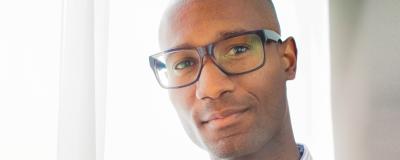What is Scar Treatment?
If you have a wound that goes deeper than the top layer of your skin, your body heals it by making tissue that’s thicker than the skin itself. After the wound heals, you might be left with scars that are noticeable or painful.
Scars can be raised, depressed or a different color or texture than the surrounding healthy skin. Some scars result in tissue contraction that restricts movement or causes discomfort. Although it’s not possible to make scars disappear entirely, scar treatment can minimize their appearance and relieve discomfort.
The kind of scar treatment that’s right for you depends on the type, size and location of your scars. Common types of scars include the following:
- Atrophic or depressed scars are most common on the face and are often caused by chicken pox or acne. They can become more noticeable as you age and your skin relaxes.
- A cicatrix, or flat scar, is usually pink and slightly raised at first, and might also be itchy or painful. As the wound heals, it typically flattens out and the color fades.
- Contractures are scars that have tightened the skin and tissue underneath so movement is restricted. They can happen when a large amount of tissue is destroyed, as with a burn, or when a wound cuts across a joint.
- Hypertrophic or raised scars are thick and might be either darker or lighter than the surrounding skin.
- Keloids are raised scars that are larger than hypertrophic scars and are usually bigger than the original wound.
They tend to be puckered, raised, and itchy or painful, and are most common in people with darker skin tones.
How Scar Treatment Works
Some scars can be treated with topical treatments, others might need minimally invasive procedures, and still others might require surgery. Your doctor will talk with you about what’s likely to work best for your scar. Scar treatments include the following:
- Corticosteroid injections can shrink raised scars and keloids, and can relieve itching or pain.
- Cryosurgery freezes the scar and slowly destroys scar tissue. Raised scars and keloids shrink with this treatment, which is also effective to reduce pain, itching, redness and hardened skin.
- Facial fillers, microneedling, dermabrasion and chemical peels are often options to diminish the appearance of facial scars.
- Laser resurfacing is useful for many types of scars, including cicatrix, atrophic, hypertrophic and keloids. This treatment can reduce the appearance of raised or depressed scars, decrease redness, soften hard tissue and reduce pain and itching. It might be accompanied by injections of steroids or other medication to improve the results.
- Surgery to remove scar tissue is known as scar revision. It can involve cutting out the scar and using fine sutures to bring the remaining skin together, or using a flap technique to reposition the scar, making it less visible and improving mobility. Skin grafts and pharmaceutical skin substitutes might be used if the scarring covers a large area.
- Topical treatments include silicone sheets and pressure dressings that you wear for several weeks or months to help reduce the appearance of raised scars and diminish pigmentation.
Which Areas of the Body are Best for Scar Treatment?
There are treatments that can help minimize scars on any part of the body. Your physician will evaluate your scars and advise you about the treatment that will work best.
How Soon Will You See the Results of Scar Treatment?
Scar treatment is personalized for each patient; treatments vary widely depending on the type and location of each scar, so the length of time it takes to see results varies as well.
Frequently Asked Questions About Scar Treatment
It can take a year or more for a wound to fully heal and finish forming a scar, after which treatment can begin. Scars caused by burns are the exception; research shows that treating these scars sooner may provide better results. Your physician will advise you on when you should treat your scars.
In most cases, research hasn’t proved over-the-counter scar remedies to be effective. Silicone sheets are the exception, but without a physician’s help it can be difficult to position them correctly and monitor their use.
It depends on the type and age of your scar, but there are usually options that can help make any kind of scar less noticeable. Ask your physician what’s most likely to work for you.





